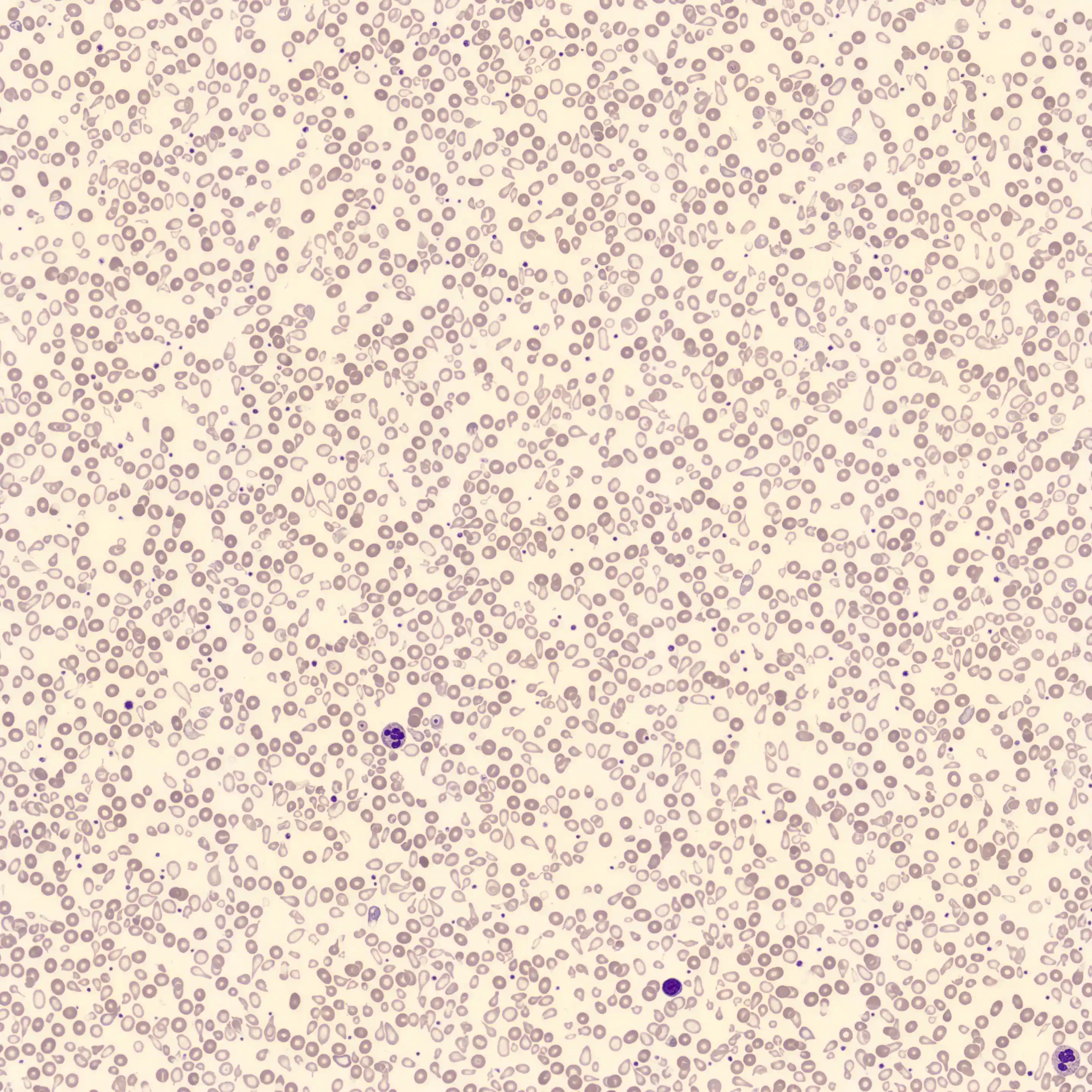CHS - Slide 1
Chédiak-Higashi syndrome is a rare, autosomal recessive congenital disorder in which the lysosomal trafficking regulator gene (LYST or CHS1) is mutated. This leads to impaired synthesis and storage of granules and lysosomes. In particular, neutrophils exhibit enlarged, clumped granules. Lymphocytes may also exhibit single, thick granules.
Because of these abnormalities, leukocytes are less able to break down bacteria and platelets are less able to aggregate. As a result, patients develop severe immunodeficiency and often have an increased bleeding tendency. In melanocytes (pigment cells), melanin remains trapped in melanosomes, resulting in light skin, light eyes and light hair (albinism). Disruptions in nerve cells cause neurological symptoms.
The prognosis for CHS is unfavorable. Without stem cell transplantation, this syndrome develops into a lymphoproliferative disease, with patients dying from opportunistic infections.
Peripheral blood

Lymphocytes












Eosinophils


Basophils

Neutrophils













































































































































































































